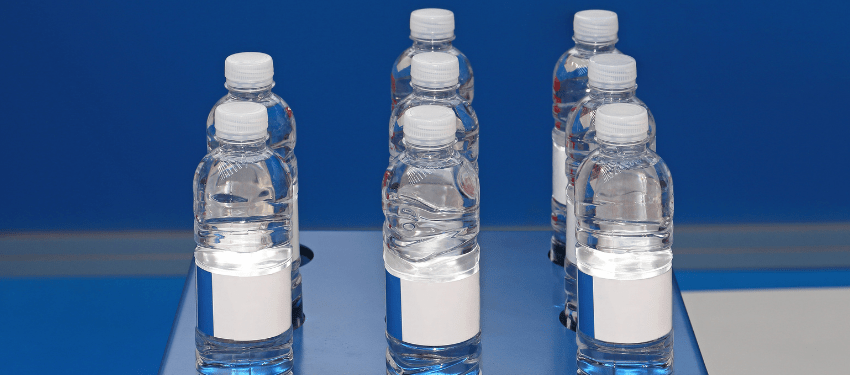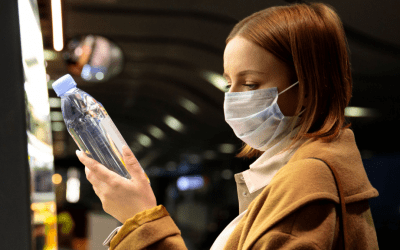What Is Packaged Drinking Water?

It is water derived from varied sources including surface, ground or sea and subjected to treatment like decantation, filtration (including aeration filtration with membrane filter, cartridge filter, activated carbon filtration), demineralisation, mineralisation and reverse osmosis. The packaged water is also disinfected before being packed so that it does not get contaminated until consumed within a specific time.
The packaged drinking water shall be filled in sealed containers of various compositions, forms and capacities that are suitable for direct consumption without further treatment. In case demineralisation is a part of the treatment process, the ingredients used shall be of food-grade quality and conform to the requirements set by Food Safety and Standards Authority of India and rules framed thereunder.
Packaged water contains many chemicals and as a consumer we don’t understand what they are and what they can do to our bodies. Here are a some details on the ingredients and their effects :
Pseudomonas aeruginosa is a bacterium that is naturally found in many types of drinking water. Pseudomonas aeruginosa can cause a range of infections but rarely causes serious illness in healthy individuals without some predisposing factor. It predominantly colonises damaged sites such as burn and surgical wounds, the respiratory tract of people with an underlying disease and physically damaged eyes. To know more on the exact amount required in your bottled water click here.
- Nitrate is a colourless, odourless and tasteless compound that is present in some groundwater. High nitrate levels in water can cause methemoglobinemia or blue baby syndrome, a condition found especially in infants less than six months old. The stomach acid of an infant is not as strong as in older children and adults. This causes an increase in bacteria that can readily convert nitrate into nitrite (NO ). To know the right Nitrate amount to consume look at the comparative test on which bottled water is safe to drink.
- Fluoride is a natural mineral found throughout the earth’s crust and widely distributed in nature. Some foods and water supplies contain fluoride. Fluoride is often added to drinking water to help reduce tooth decay. Exposure to excessive consumption of fluoride over a lifetime may lead to increased likelihood of bone fractures in adults and may also result in effects on bone, leading to pain, tenderness and fluorosis on long intake of affected water. Children aged eight years and younger exposed to excessive amounts of fluoride have an increased chance of developing pits in the tooth enamel, along with a range of cosmetic effects on teeth. Its good to know the amount of fluoride in your water.
- Chloride salts such as sodium chloride are often very soluble in water.Chloride occurs naturally in ground water and most common anion in tap water. Chloride in drinking water is generally not harmful to people until high concentrations are reached, although chloride may be injurious to some people suffering from diseases of the heart or kidneys. Restrictions on chloride concentrations in drinking water are generally based on taste requirements rather than on health. Liquid chlorine is mixed into drinking water to destroy bacteria. The maximum permissible limit for chloride and sulphate as per IS is 200 mg/litre.
- Sulphate is a naturally occurring substance that contains sulphur and oxygen. Sulphate is generally considered to be non-toxic. However, the consumption of drinking water containing high amounts of sulphate may result in intestinal discomfort, diarrhoea and consequently dehydration.
- TDS stands for total dissolved solids, and represents the total concentration of dissolved substances in water. TDS is made up of inorganic salts, as well as a small amount of organic matter. Water is a good solvent and picks up impurities easily. As per WHO guidelines for drinking water quality, water with extremely low concentrations of TDS may be unacceptable to consumers because of its flat, insipid taste. At the same time, drinking water becomes significantly and increasingly unpalatable at TDS levels greater than about 1,000 mg/litre.
- Radioactive minerals occur irregularly in the bedrock, similar to other minerals such as iron and arsenic. Radioactive alpha and beta emitters dissolve easily in water. The principal health concerns associated with regulated radionuclides in water include: radon gas increases the risk of lung cancer; uranium increases toxicity risk to the kidneys; and radium increases one's risk of bone cancer. It’s important to know in the packaged water brands contain radioactive emitters or not, to know more on the comparative safe bottled water test on 12 brands click here.
- Consumer VOICE tested 12 brands of bottled water to know the safest bottled water and also tested 5 brands of 20 lts. of packaged water to find the best packaged drinking water brand.
Related
consumer voice testing of one litre packaged drinking water
Consumer voice testing of one litre packaged drinking waterPackaged drinking water is now most commonly used by people everywhere. Whether travel,...
No need to pay extra for bottled water at cinemas, malls and airports: Ram Vilas Paswan
No need to pay extra for bottled water at cinemas, malls and airports: Ram Vilas Paswan As consumers, we feel helpless when we get charged extra for...


